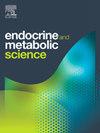使用激素疗法的变性妇女的血小板活化和炎症反应
Q3 Medicine
引用次数: 0
摘要
目的变性女性罹患心血管疾病(CVD)的风险增加背后的病理生理过程仍有待阐明。这项探索性研究旨在探讨女性化性别确认激素疗法(GAHT)开始后,血小板活化和炎症的变化是否可能是一个促成机制。测量血小板活化标志物血浆血栓素 B2、闭合时间、CD63、CD62p、血小板-白细胞复合物和未成熟血小板部分。结果CD63、CD62p和血小板-白细胞复合物在GAHT 12周后呈上升趋势。52 周后,所有血小板活化标志物都出现了抗聚集变化。在第 12 周时,12 种炎症标志物中有 8 种呈下降趋势。结论 这些研究结果表明,在女性化 GAHT 期间,血小板活化会发生波动,最初会增加,随后会减少。此外,炎症标志物也呈下降趋势。在本研究的范围内,我们无法确定 GAHT 诱导的血小板活化是导致变性女性心血管疾病风险增加的明确因素。要进一步研究女性化性别肯定激素疗法对血小板活化和炎症的影响,还需要进行参与者人数更多和随访时间更长的研究。本文章由计算机程序翻译,如有差异,请以英文原文为准。
Platelet activation and inflammation in transgender women using hormone therapy
Objective
The pathophysiological process behind the increased risk of cardiovascular disease (CVD) in transgender women remains to be elucidated. This exploratory study aimed to investigate whether changes in platelet activation and inflammation after the start of feminizing gender-affirming hormone therapy (GAHT) could be a contributing mechanism.
Design
Longitudinal cohort study.
Methods
Venous blood was collected from 17 transgender women at 0, 12 and 52 weeks after GAHT initiation, consisting of estradiol and testosterone suppression. Platelet activation markers plasma thromboxane B2, Closure Time, CD63, CD62p, platelet-leukocyte complexes and immature platelet fraction were measured. CRP and 11 cytokines were measured as inflammation markers.
Results
CD63, CD62p and platelet-leukocyte complexes tended to increase after 12 weeks of GAHT. After 52 weeks, all platelet activation markers showed anti-aggregatory changes. Eight out twelve inflammation markers exhibited a decreasing tendency at week 12. Equivalently, after 52 weeks, eight inflammation markers tended to decrease, seven of which had also exhibited a decrease at week 12.
Conclusions
The collective findings suggest that platelet activation fluctuates during feminizing GAHT, exhibiting an initial increase followed by a decrease. Additionally, inflammation markers tend to decrease. Within the scope of this study, we could not identify GAHT induced platelet activation as a definite contributing factor in the increased risk of CVD in transgender women. Studies with larger numbers of participants and longer follow-up duration are needed to further investigate the effect of feminizing gender-affirming hormone therapy on platelet activation and inflammation.
Trial registration
EudraCT #2017-003072-31.
求助全文
通过发布文献求助,成功后即可免费获取论文全文。
去求助
来源期刊

Endocrine and Metabolic Science
Medicine-Endocrinology, Diabetes and Metabolism
CiteScore
2.80
自引率
0.00%
发文量
4
审稿时长
84 days
 求助内容:
求助内容: 应助结果提醒方式:
应助结果提醒方式:


